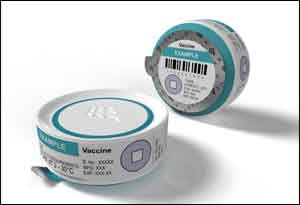- Home
- Editorial
- News
- Practice Guidelines
- Anesthesiology Guidelines
- Cancer Guidelines
- Cardiac Sciences Guidelines
- Critical Care Guidelines
- Dentistry Guidelines
- Dermatology Guidelines
- Diabetes and Endo Guidelines
- Diagnostics Guidelines
- ENT Guidelines
- Featured Practice Guidelines
- Gastroenterology Guidelines
- Geriatrics Guidelines
- Medicine Guidelines
- Nephrology Guidelines
- Neurosciences Guidelines
- Obs and Gynae Guidelines
- Ophthalmology Guidelines
- Orthopaedics Guidelines
- Paediatrics Guidelines
- Psychiatry Guidelines
- Pulmonology Guidelines
- Radiology Guidelines
- Surgery Guidelines
- Urology Guidelines
A simple, easy-to-administer Nanopatch polio vaccine developed

Efforts to rid the world of polio have taken another significant step, thanks to research led by University of Queensland bioscience experts and funding from the World Health Organisation (WHO).
A fresh study of the Nanopatch - a microscopic vaccine delivery platform first developed by UQ researchers - has shown the device more effectively combats poliovirus than needles and syringes.
Head of UQ's School of Chemistry and Molecular Biosciences Professor Paul Young said the breakthrough provided the next step in consigning polio to history.
"Polio was one of the most dreaded childhood diseases of the 20th century, resulting in limb disfigurement and irreversible paralysis in tens of millions of cases," Professor Young said.
"This most recent study showed the Nanopatch enhanced responses to all three types of inactivated poliovirus vaccines (IPV) - a necessary advancement from using the current live oral vaccine.
"We are extremely grateful to the WHO for providing funding to Vaxxas Pty Ltd, the biotechnology company commercialising the Nanopatch.
"The support specifically assists pre-clinical studies and good manufacturing practices."
Patch inventor Professor Mark Kendall said the study exhibited a key advantage of the Nanopatch.
"It targets the abundant immune cell populations in the skin's outer layers, rather than muscle, resulting in a more efficient vaccine delivery system," Professor Kendall said.
"The ease of administration, coupled with dose reduction observed in this study suggests that the Nanopatch could facilitate inexpensive vaccination of inactivated poliovirus vaccines."
UQ Australian Institute for Biotechnology and Nanotechnology researcher Dr David Muller said effectively translating the dose could dramatically reduce the cost.
"A simple, easy-to-administer polio Nanopatch vaccine could increase the availability of the IPV vaccine and facilitate its administration in door-to-door and mass vaccination campaigns," said Dr Muller.
"As recently as 1988, more than 350,000 cases occurred every year in more than 125 endemic countries.
"Concerted efforts to eradicate the disease have reduced incidence by more than 99 percent."
"Efforts are being intensified to eradicate the remaining strains of transmission once and for all."
Data from the study encourages efforts by Vaxxas - established by UQ's commercialisation company UniQuest - to bring the technology to use for human vaccinations.
"The research we are undertaking in conjunction with UQ and WHO can improve the reach of life-saving vaccines to children everywhere," Vaxxas chief executive officer David Hoey said.
For more details click on the link : http://dx.doi.org/10.1038/s41598-017-13011-0

Disclaimer: This site is primarily intended for healthcare professionals. Any content/information on this website does not replace the advice of medical and/or health professionals and should not be construed as medical/diagnostic advice/endorsement or prescription. Use of this site is subject to our terms of use, privacy policy, advertisement policy. © 2020 Minerva Medical Treatment Pvt Ltd